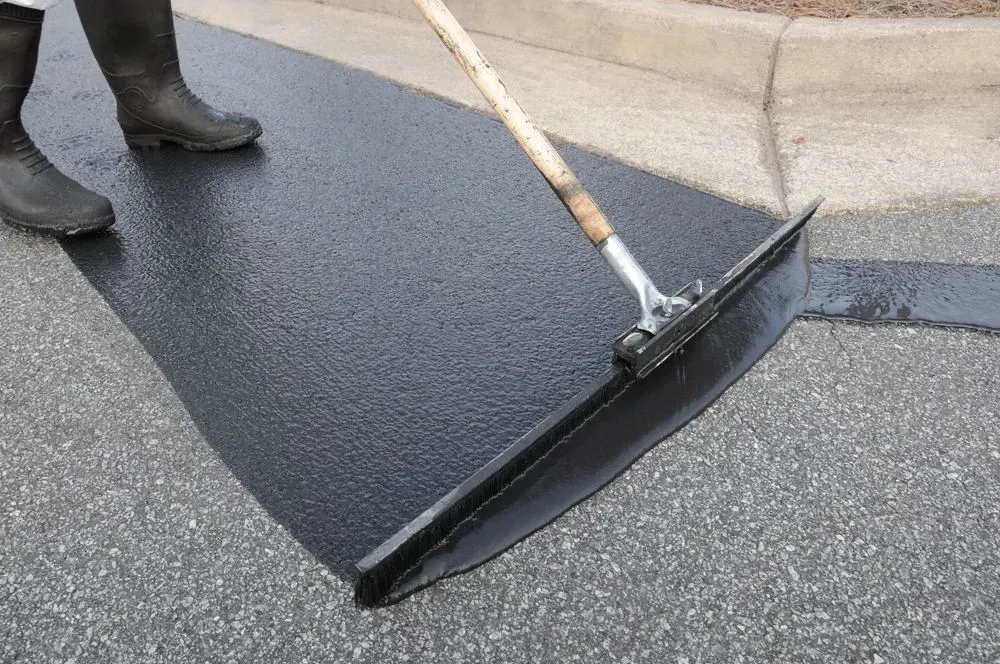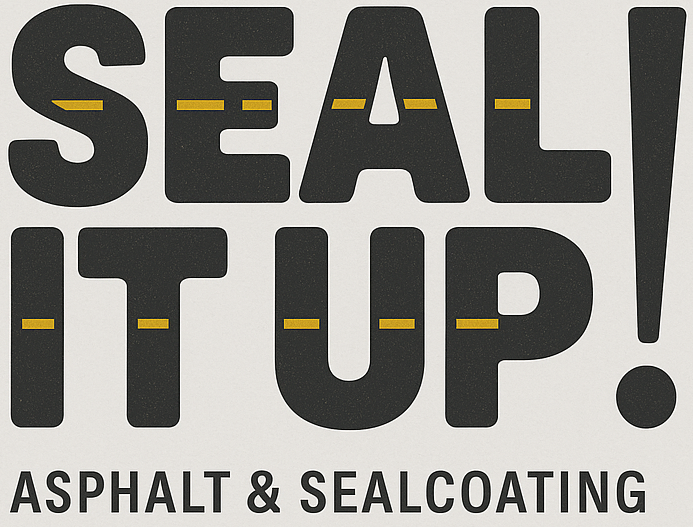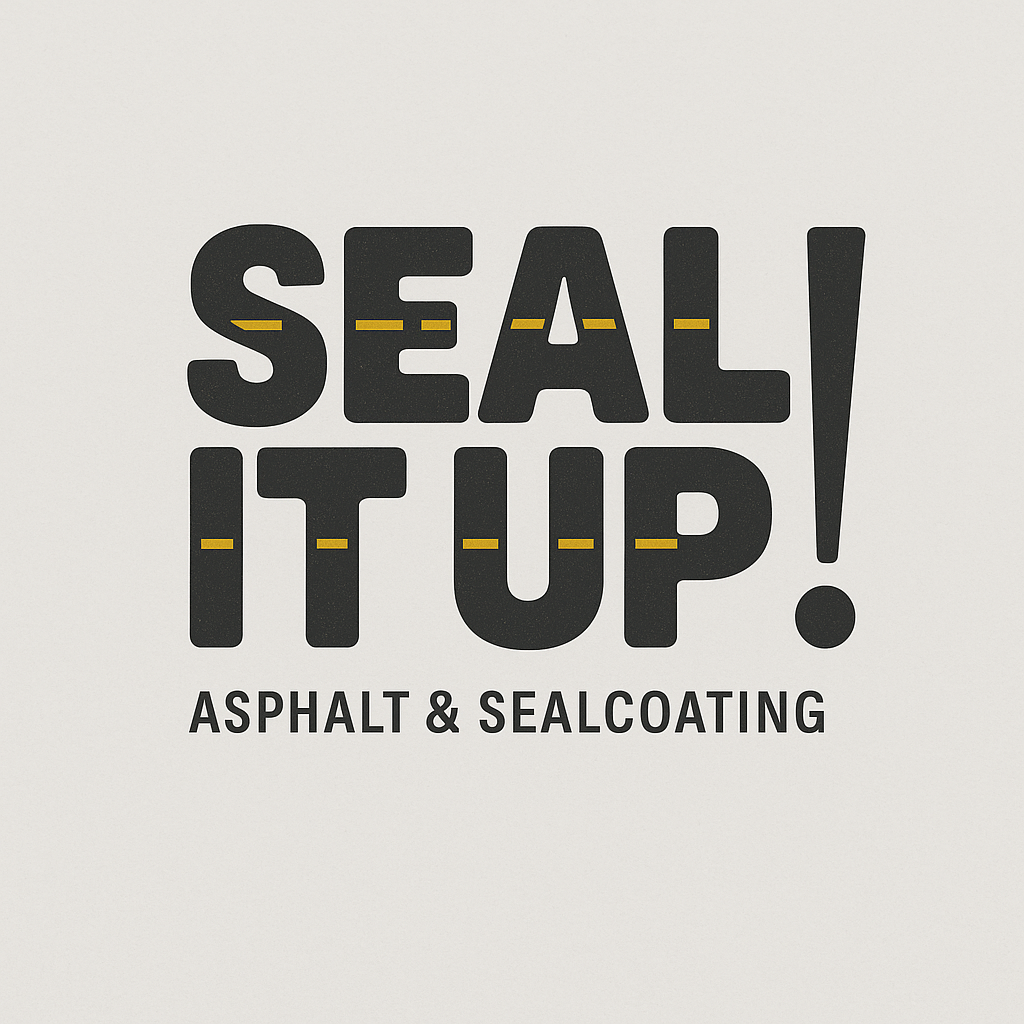Sealcoating vs. Overlay: What Is the Best Option for Worn Asphalt in Las Vegas?

Start With the Goal: Preserve or Rebuild
When your asphalt starts to fade, ravel, or crack, the best fix depends on the underlying condition. Sealcoating protects and preserves. An asphalt overlay adds a new structural layer. In the Las Vegas valley, intense sun, high surface temperatures, and dry winds can age pavements fast. Choosing the right path now prevents bigger repairs later.
What Sealcoating Does
Sealcoating applies a protective layer that shields the surface from UV, oxidation, and water intrusion.
Ideal Use Cases
- Color fading and light raveling
- Hairline or minor transverse cracks after crack sealing
- Recent asphalt that needs preventive maintenance
- Parking lots with moderate traffic
Benefits
- Restores rich black color for curb appeal
- Slows oxidation from extreme UV exposure
- Seals tight surface voids to reduce water penetration
- Lower cost and quick return to service limits
Sealcoating does not correct structural problems. If you have deep fatigue cracking, widespread potholes, or soft spots, the surface needs more than a protective coat.
What an Overlay Does
An asphalt overlay installs new hot mix over an existing base. It addresses ride quality, rutting, and moderate structural wear.
Ideal Use Cases
- Moderate alligator cracking confined to the surface
- Ruts, waves, and uneven patches from age or heat cycles
- Sturdy base and subgrade with no pumping or severe failures
- Sites that cannot shut down for full reconstruction
Benefits
- Adds new life and structure without full tear out
- Smooths the surface for better drainage and safety
- Extends service life by years when paired with maintenance
Limits
If the base is failing, an overlay only hides the pain. Areas with subgrade movement, heavy heaving, or saturated base layers require milling, patching, or full-depth reconstruction before overlay.
Las Vegas Climate Factors to Consider
UV and Heat
Las Vegas pavements bake all summer. UV breaks down binders, which causes raveling and color loss. Sealcoating slows this process and keeps the surface tighter.
Flash Rains and Drainage
Downpours are brief but intense. Standing water in low spots speeds damage. Overlays can correct minor ponding by reestablishing slope.
Fuel and Tire Scuffing
High temperatures soften asphalt. Loading zones and turn lanes may polish or tear. In these areas, stronger mixes or thicker overlays perform better than a thin sealcoat alone.
How We Decide: A Simple Field Checklist
- Map visible distress. Note areas of alligator cracking, potholes, and rutting.
- Probe the base. Soft pumping or saturated spots point to deeper repair needs.
- Review drainage. Look for birdbaths and curb-to-curb flow issues.
- Match the fix.
- Preventive maintenance need: sealcoating after crack sealing.
- Surface rehabilitation: overlay after milling or patching.
Structural failure: targeted base repair or reconstruction.
Cost, Downtime, and Life Expectancy
- Sealcoating: Lowest cost. Typical return to service within 24 to 48 hours depending on heat and cure. Extends life when repeated on a schedule.
- Overlay: Higher cost. Staged lane closures are common. Adds structural life and can reset your maintenance clock.
Best practice: Use sealcoating on a cycle after an overlay to protect your investment.
Common Scenarios We See in Clark County
Faded but Sound Shopping Center Lot
Cracks are minor and the surface is dusty from UV. Recommendation: crack seal, two coats of sealer, and new line striping for a clean, safe layout.
Apartment Community With Ruts at Entrances
Subgrade is stable, but stop-and-go traffic created depressions. Recommendation: mill localized ruts, install an overlay, then sealcoat in 12 to 18 months.
Business Park With Alligator Cracking Along Truck Path
Repeated heavy loads and heat have broken the mat. Recommendation: saw and remove failed panels, repair base, pave with thicker hot mix, then sealcoat the rest.
Why Choose Seal It Up! in the Las Vegas Area
We deliver pavement preservation and repair across Las Vegas, Henderson, North Las Vegas, Paradise, Boulder City, Spring Valley, and Pahrump.
- Sealcoating that stands up to UV and heat
- Chip seal, crack and pothole repair to stop small issues from spreading
- Asphalt paving and overlays tailored to traffic and use
Parking lot and line striping for safer, more efficient flow
Sealcoat FAQs
Will sealcoating fix alligator cracks?
No. Alligator cracking indicates structural distress. Those areas need patching or thicker asphalt, not just sealer.
Can I overlay without milling?
Sometimes. If the grade, curbs, and drainage allow, a level-up and overlay can work. If there are high spots or manholes, milling is often required.
How often should I sealcoat in Las Vegas?
Many commercial lots benefit from a 2 to 3 year cycle, adjusted for traffic and sun exposure.
Ready to Protect Your Pavement?
Get a site assessment from
Seal It Up! Our team will inspect, measure, and recommend the right mix of crack repair, sealcoating, or overlay to fit your goals and budget. Serving Las Vegas, Henderson, North Las Vegas, Paradise,
Boulder City, Spring Valley, and Pahrump.

